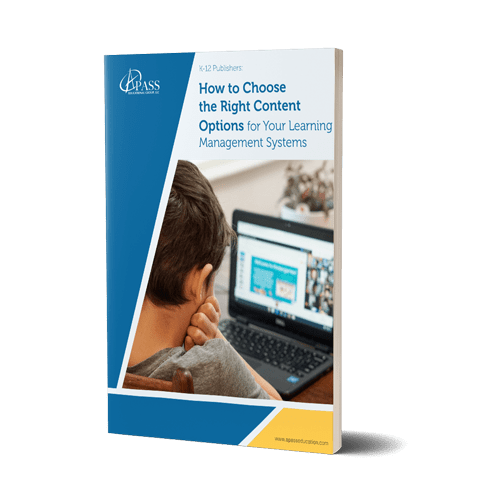The Accessibility Books Consortium says 10% of readers have some degree of impairment reading print. So, publishers get the job of making sure content is accessible to all readers. Thus, publishers must reach the broadest audience by mixing digital and print products. Here are five points publishers should understand for accessible education.
Accessible Education Provides Unique Features Accessibility and Content
Therefore, accessible content can be easily accessed and manipulated by students. K-12 readers with or without disabilities can experience the same content. Likewise, publishers can meet readers’ needs. Familiar examples include large print texts and braille. Also, text-to-speech features give many students access to education. Yet, more features are sprouting up. Structurally tagged content and a navigable table of contents are two examples. Alternative text descriptions explain visuals and photos for visually impaired students. Also, font size, style, and color impact readers for accessible education. Content that lets readers select alternate background colors and control line spacing helps support and instill comprehension.
Adaptive Technology Supports Equity
Still, providers face challenges in creating products that various learners can access in education. Still, publishers have tools that make a difference in the lives of K-12 readers. Many accessibility features assist all readers. These features let students customize their reading preferences. Besides that, adaptive technology lets students access content how they like to get it. In addition, mobile access lets students enjoy the same benefits of access in education and drives equity. Still, publishers need to invest in their digital products. Content needs to flow across various screen sizes. Besides that, content creators must ensure access to education because students use different devices.
Assistive Structures Support Accessible Education
Yet, access rests on how skilled the reader is with assistive tech. The technical aspects must be easy to use. Also, consistent features across products let readers become accustomed to the tools. This consistency lets the reader focus on learning content and not the tools. Most importantly, readers and teachers need to be able to easily find content. Likewise, metadata makes this easy to do. Headings, chapters, and sections drive reading comprehension. Running headers and page numbers tell readers where they are in the text. Active hyperlinks in the table of contents and indexes give readers more. Yet, publishers need to offer immediate help when links break and questions arise.
Accessibility and Content
Yet, publishers must be careful that file formats are not misused to create content that K-12 readers cannot access. For accessible education, content authors must know how to use the features to build them into the content. Therefore, the user interface needs to be simple and easy to use. Accessibility needs to be built-in from the start rather than as an afterthought or as a separate product. Moreover, the content can be prepared to be easily used in different sections. Besides that, an accessibility audit should include the following: special data access, supported screen readers, syncing, text and image access.
Auditing for Accessible Education
Still, the best place to start is an audit. Successful audits spur appropriate goals. Goals achieve the organization’s vision. Also, the company’s attitudes toward access in education will come to light. The data prioritize the next steps. Besides that, leaders understand the legal positions needed in the global marketplace. In addition, the audit will detect in-house workflows ripe for improvement. The audit identifies how many file types are created in-house and in contracted products. Storage preferences and archived file types will be highlighted.
In summation, providers who understand these four methods can support access in education for K-12 students. Besides that, these practices are good for business. Visual and print impairments impact many readers. Publishers could expand and grow into new markets by offering these products. At the same time, providers support access and drive equity in education.





